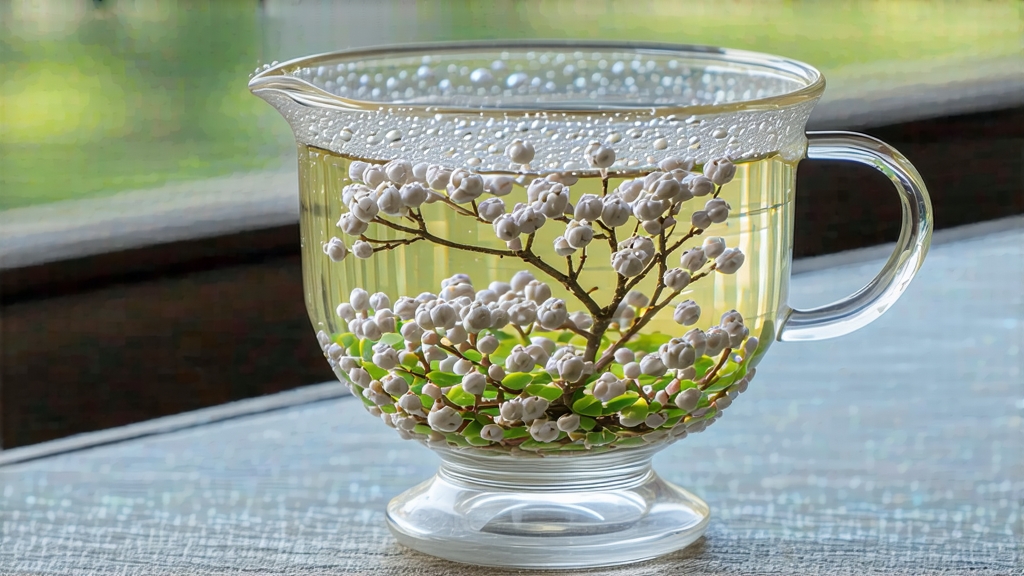
If green tea is the youthful face of Chinese tea culture and pu-erh its venerable elder, then white tea is the quiet poet who arrives at dawn and vanishes before the market stirs. Among the sparse yet sublime family of white teas, none embodies this ethereal spirit more perfectly than Silver Needle—Bai Hao Yin Zhen in Mandarin. Revered for its luminous color, silvery fuzz, and a flavor that hovers between absence and presence, Silver Needle is both the most prestigious and the most misunderstood expression of Camellia sinensis. International drinkers often mistake its delicacy for simplicity, yet coaxing its full narrative demands the same attentiveness one would grant a fragile manuscript.
1. Historical whispers from the Song to the modern cup
Although commercial production of white tea is usually dated to the late eighteenth century, literary references trace its ancestry to the Northern Song (960–1127). The imperial tribute list of 1107 mentions “white buds from Shui Ji” presented to Emperor Huizong, a monarch so obsessed with tea that he composed a treatise on froth patterns while his empire crumbled. Those early whites were probably compressed cakes whisked like matcha; the loose, needle-shaped style recognizable today emerged in Fujian’s Fuding county during the 1790s, when improved roadways allowed tea to reach Canton merchants before oxidation darkened the leaf. Export records kept by the British East India Company show Silver Needle priced higher than Keemun or Wuyi rock tea throughout the 1880s, yet only a few chests left the port each year, most reserved for Southeast Asian Chinese apothecaries who valued its “cooling” properties.
2. Terroir: where fog writes on marble cliffs
Authentic Silver Needle is born inside a narrow latitudinal belt between 27° and 27°30′ N on Fujian’s rugged coast. Two micro-regions share the throne: Fuding, with its granite soils and maritime fogs, and Zhenghe, slightly inland, where higher diurnal range concentrates amino acids. Within Fuding, the village of Taimu Mountain—once a refuge for Taoist hermits—produces the most coveted needles; its parent rock is quartz-rich porphyry that weathers into a sandy, acidic loam. Locals insist the mountain’s “stone breath” mineralizes the tea, giving a subtle flint note behind the honeyed aroma. Elevation matters: bushes planted between 400–700 m sit just below the cloud ceiling, harvesting diffused light that encourages long, slender buds while preserving their velvet cloak of trichomes.
3. Cultivar: the gentle arrogance of Da Bai
Unlike other famous teas that can be coaxed from multiple cultivars, Silver Needle’s identity is inseparable from Fuding Da Bai (literally “Big White”). Selected during the Daoguang reign (1821–1850) from a single mother bush discovered near Tai Lao village, Da Bai produces buds that average 2.5–3 cm, almost twice the length of ordinary tea varieties, and contain 4.7 % amino acids versus the 2.8 % typical of run-of-the-mill bushes. The cultivar’s large trichomes scatter light, creating the shimmering “silver” appearance that gives the tea its name. Attempts to transplant Da Bai to Yunnan or India have succeeded agronomically yet fail sensorially: the same genetics, when kissed by tropical ultraviolet, yield coarser, less fragrant needles, proving that cultivar is only half the score; terroir hums the melody.
4. Picking: the lunar calendar in a bamboo basket
The harvest window opens on the first or second day of Qingming festival—usually 4 or 5 April—when daytime temperatures stabilize around 15 °C and nights still dip to 10 °C. This thermal seesaw slows growth, allowing aromatic precursors to pool inside the bud. Pickers, mostly women wearing wide straw hats, snap off only the unopened apical bud using the nail of the thumb and middle finger; a twisting motion bruises tissue and invites premature oxidation. Traditional lore demands that harvesting finish before the sun climbs to a 30° angle, because stronger light wilts the trichomes and flattens fragrance. A skilled picker gathers roughly 700 g of fresh buds per hour; 25,000 of these become 500 g of finished tea, explaining why Silver Needle can cost more than its weight in sterling silver.
5. Withering: the art of doing almost nothing
Once back at the farmhouse